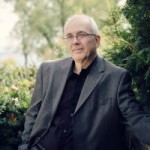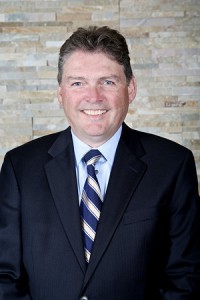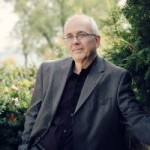
By Mark Venning, ChangeRangers.com
Special to the Financial Independence Hub
“We’re on a bit of a crusade to change the way our society thinks about retirement.” — Jonathan Chevreau & Mike Drak
Mike Drak and Jonathan Chevreau, co-authors of Victory Lap Retirement (published, October 2016) are not the first to head out on this crusade. Apart from the material on the larger subject of aging and longevity, in my library I must have at least 19 books, in addition to the stacks of reports, studies and new models on the subject of Retirement.
Over the twenty years in the career services industry, where I worked directly with business executives in their later life transitions – leaving the corporate crow’s nest, as I call it, I can appreciate where Mike and Jonathan are coming from in their take on this. I have produced three retirement programs since 2001, and in the process suffered from metaphor madness, developing novel ways of reframing the concept of retirement and our later life journey.
However, this Drak & Chevreau volume is a welcomed new addition to this crusade. The book, by way of its novelty, weaves the conversation from the threads of a concept called Findependence, as the cornerstone of a Victory Lap Retirement. So here we go. Rather than a traditional book review, here in this blog post, I present views of the authors as shared through interview questions with them in late October.
Mark’s Q: Your co-authored book, early on, takes a shot across the bow at the “financial media & financial services industries” in the way they persist to push “Retirement” as if it were some final destination. (There seems little shift between the 1970’s London Life’s Freedom 55, to Prudential’s 2016 Race for Retirement campaigns for example.) What one new key message should marketers take from reading Victory Lap that could become a differentiator in their marketing?
Mike: The industry is using the same commercials that they used 40 years ago. The only difference is that they are now in color. The world of retirement has changed significantly over the years and most people cannot afford nor do they want to live the lifestyle portrayed in their commercials.
Banks assume more money equals better retirement, which is wrong thinking. Banks are good with the investment piece but they need to become more involved with the lifestyle piece. How can you ever know if you have enough if you do not have a firm handle on what type of retirement lifestyle you want in retirement and what that lifestyle will cost?
Mark’s Q: At one point in Chapter 3, you make the point that: “Compounding the problem is the lack of financial education our children receive in school.” You also say in Chapter 4 that the importance of financial independence is a prerequisite to the new stage of life you call “Victory Lap Retirement.” Let’s play here. What do you think about an opportunity for you to design/deliver a “Findependence” course relatable to high school teenagers that didn’t use the word Retirement? What then would the main message sound like to them?
Jon: We’d say there is an opportunity there. As you noted in your review of The 100-Year Life, today’s millennials will have very long lifespans and life expectancy, and perhaps an 80-year investment time horizon. That in itself suggests an asset allocation of almost 100% equities, so such a course could discuss life expectancy, investing and asset allocation, as well as making the distinction between old-time “Retirement” and the new terms Findependence/Victory Lap.
Such a course would also look at the changed 3 Boxes of Life paradigm: instead of 15 or so years of School, followed by 40 years of the “Slave and Save” Work box, capped off by 10 or 20 years of the permanent vacation known as “Retirement,” the course would look at repeating cycles of School/Work/Leisure. Findependence would be a key part of that since every time a young or middle-aged person left the “Work” box they would need some money (aka Findependence) to fund either the “Back to School/Retraining” box or the sabbatical “Travel/Leisure” box.
Mark’s Q: Throughout the book, you speak with consistent references relatable to a Boomer audience, (your primary target reader), overworked by the corporate world experience, facing a “rethink on retirement.” Given that current/future generations are not likely to share the world of work as in that old narrative, but more in a kind of episodic, tenuous relationship with the corporate world, what is your best advice on how they can achieve “Findependence” through their life course?

Mike: Findependence should be their primary goal, but they will have many different options about how to get there. Due to increased longevity they will have time to make mistakes and recover from them and hopefully through trial and error find something they really love doing.
This is in stark contrast to what we went through, where we were taught to accomplish everything within a 35-year timeframe. No wonder so many of us suffer from high blood pressure!
Jon: We think young people should aim for some level of Findependence by their 30s … So we advocate spending one’s 20s acquiring skills to survive the constantly-in-flux workplace, and once the Work box is entered, being frugal enough to pay off all high-interest credit-card debt, student loans and ultimately the mortgage on a first home: keeping mind that we regard a paid-for home to be the foundation of Financial Independence.
Once debts are eliminated, maintain the frugal lifestyle and divert what used to be debt repayments into monthly pre-authorized contributions to pensions, RRSPs, TFSAs and the like.
(Part 2 of the Interview)
“Work while you play, play while you work – the joy of Financial Independence at any age”
So goes the sub-title to Victory Lap Retirement. As described at the start of chapter 3, Findependence, a term originally coined by Jon Chevreau, is the cornerstone of a Victory Lap Retirement. This pivotal chapter leads with an easy to grasp formula with three core benefits and a six-stage model for an individual’s financial life cycle. Chapter 4 gives you the “seven eternal truths” of financial independence/Findependence.
Over the years when I produced and delivered retirement programs, I typically teamed with a certified financial planning professional who did not have a self-serving interest in pushing a product. My insistent request was for giving holistic advice that met the audience where they were at, in their varying ages and stages of life — not always an even playing field for a group discussion; which is why it is pleasing to see the way the financial piece is presented in this book.
Mark’s Q: There are corporate natives who have successfully crafted a version of Victory Lap in later life without necessarily achieving “Findependence” before doing so, and in other cases, older owners of family-run small businesses may have achieved financial goals but haven’t even thought about a Victory Lap, let alone a legacy plan for selling their business.
With an “it’s never too late” attitude, what quick steps could either of these take to shore up their possibilities for success?
Mike: You can do a Victory Lap without having achieved Findependence. A good example of a person doing this would be Ernie Zelinski, who wrote the foreword to the book. But I like to sleep at night, so having a Findependence safety net under me is the way I would go.
Self-employed people on average work longer than salaried people but at some point they have the flexibility to cut back on the hours and take some stress off. In many cases, they sell the company off to the kids and remain in a consulting role for as long as they like and in many cases this is a long, long time.

Jon: It’s true that entrepreneurs may be born, not made, and therefore they take risks early in life, sometimes, as in the case of Bill Gates, Steven Jobs … and many more – leaving college, eschewing the corporate life and plunging into the great unknown of building huge businesses while still in their 20s. Mark Zuckerberg would be another example. In these cases, these people bootstrap themselves with sweat equity and raising money from family and friends and often venture capital.
The audience for our book is perhaps not quite so risk-taking: we assume people like ourselves who have spent a decade or three in the corporate trenches, perhaps making compromises while they raise their families. But, while they may put their dreams on hold, as you point out, it’s never too late and for many, Findependence will be the necessary ingredient for manifesting those urgent long-suppressed dreams and life goals.
Mark’s Q: Over my many years in the career development field, a core message I’ve passed on to those facing transitions at all life stages has been to develop & recalibrate an ongoing strategic career/life plan, which you also encourage in Victory Lap.
From your experience, what would you recommend to add value to providers of “career transition services” that would better serve someone in their later life career?
Mike: I believe IA’s (Investment Advisors) are in the best position to connect the financial planning and lifestyle piece. It’s a great value add for them and will help justify the fees that they charge. The question is that some will not be qualified/experienced enough to do it.
You really need the benefit of someone who has been there and gone through the transition themselves. I’m doing a little experiment with my wife, who is an Investment Advisor. I’m providing free Victory Lap mentoring to her clients, but you have to be careful with how many clients you service because to do this well it takes a great deal of time.
Jon: I see Victory Lap as a sort of holistic interdisciplinary field that brings together life coaching, career counselling, financial planning and investment advice, as well as education and retraining. I think Mike has in mind a kind of coaching role in which he becomes the quarterback for all these disciplines, on behalf of would-be Victory Lappers who are still making the post-corporate transition.
Interview Postscript
As I reflected on the responses from Mike & Jon, I am reminded of how in most cases in the past and even now, too many so-called retirement programs have separated in content, the financial piece from what is often called the lifestyle piece.
In fact, I have found that the word lifestyle itself has often assumed the dimension of being in some part, a consumer marketing pitch. As much as I tried to re-position the concept of retirement, I still found myself introduced to a group as the “retirement lifestyle guy.” Poke me with a stick.
If I had a nickel extra every time I heard that, I would have discovered my own Findependence before breakfast instead of lunch. So I leave it to others to look for their style. As Mike & Jon suggest in the final chapter, I will look to “live an uncommon life.”
 Mark Venning works with not-for-profit and business leaders, providing presentations, research and advisory services on the Business & Social Aspects of Aging Demographics — and 1:1 with business executives “leaving the corporate crow’s nest” to explore Entrepreneurship in Later Life. www.changerangers.com. This two-part interview first appeared here and here at his website and Mark merged the two for this version appearing here on the Hub.
Mark Venning works with not-for-profit and business leaders, providing presentations, research and advisory services on the Business & Social Aspects of Aging Demographics — and 1:1 with business executives “leaving the corporate crow’s nest” to explore Entrepreneurship in Later Life. www.changerangers.com. This two-part interview first appeared here and here at his website and Mark merged the two for this version appearing here on the Hub.



